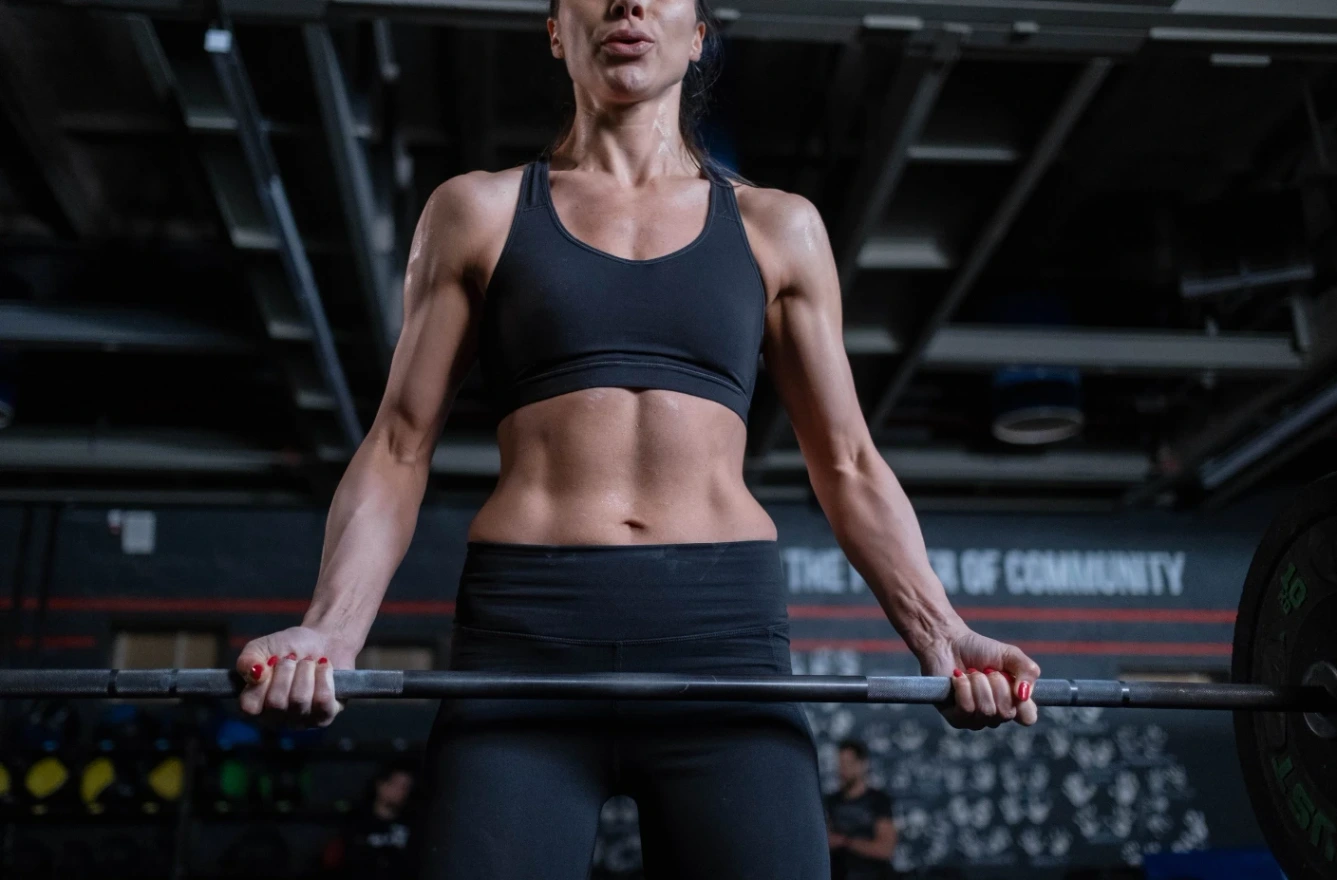Since the 1960s, the world of women's fitness has been looking for benchmarks to define "ideal" body proportions. Unlike their male counterparts, women have long been neglected by traditional bodybuilding calculation formulas, leaving a gap in the quest for reference measurements.
It's in this context that specifically feminine approaches like John Barban's Venus Index emerge, which promises to reveal your "perfect" proportions based on your waistline alone. The formula is seductive in its apparent simplicity: enter your height, and instantly discover the waist, hip, bust and shoulder measurements you "should" achieve according to the Golden Ratio and mathematical ratios.
At the same time, many women are trying to adapt historical male formulas - those of Casey Butt, John McCallum or based on Steve Reeves - by extrapolating their data to female morphologies, despite the obvious inadequacy of this approach.
But what are these methods really worth when applied to women? Is the Venus Index based on sound science, or is it more a marketing exercise for women's fitness? Can extrapolations of male formulas serve as reliable targets, or do they risk creating dangerously unrealistic expectations in a context of already intense aesthetic pressure?
The "ideal" measurements for women: the Venus index
The Venus Index, developed by John Barban, attempts to fill the gap left by the historical absence of women in "ideal" measurement formulas.
Unlike male approaches based on observing bodybuilders, Barban draws on mathematical and aesthetic concepts to create his system.
Please note that we're presenting this tool in all transparency, for those who might be interested, but we absolutely do not recommend its use, as you can understand from the rest of the article, which is critical of it.
We consider that the "ideal" measurements of a woman or man are those of a healthy, functional body, chosen by that person.
Venus Index calculator
John Barban's formula for women's fitness based on "ideal" size ratios
The Venus Index is based on several principles:
- Waist circumference as a base: 38% of body size, supposed to reflect "naturally attractive" proportions
- Application of the golden ratio: 1.618 for shoulders, borrowed from art and architecture
- Simple multiplications: hips (×1.42) and chest (×1.35) derived from calculated height
This approach appeals for its apparent simplicity and its reference to the golden ratio, giving an impression of scientific legitimacy.
How do you take a woman's measurements?
To take your measurements correctly (for health, sewing or sports purposes), you need to use a flexible tape measure and remain upright, without pulling in your stomach or forcing your posture.
- Chest (bust)
- Pass the ribbon horizontally over the tips of the breasts, flat against the back.
- Do not overtighten, the ribbon should just touch the skin.
- Underbelly
- Just under the breast, where a bra passes.
- Just under the breast, where a bra passes.
- Size
- At the deepest point of the abdomen, generally above the navel, where you bend over to the side.
- At the deepest point of the abdomen, generally above the navel, where you bend over to the side.
- Hips / pelvis
- At the widest point of the buttocks, tape parallel to the ground.
- This measurement is used to calculate the waist-to-hip ratio (WHR).
- Shoulders (shoulder-to-shoulder span)
- Ribbon laid across the upper back, from one shoulder end to the other.
- Ribbon laid across the upper back, from one shoulder end to the other.
- Arm
- Arm circumference: at the strongest point (often the contracted biceps).
- Arm length: shoulder to wrist.
- Thighs
- Turn taken at the widest point, generally under the buttock.
- Turn taken at the widest point, generally under the buttock.
- Calves
- Tour taken at the most developed point.
Practical tips
- Always measure on the skin or on very thin clothing.
- Record values in cm, at the same time of day, for comparison over time.
- For fitness follow-up: repeat every 30 days.
Fundamental flaws in the Venus system
1. No empirical validation
Unlike the waist-to-hip ratio, which has benefited from decades of research, the Venus Index has never been the subject of scientific study.
The proposed ratios are not based on any analysis of real populations or controlled aesthetic evaluations.
2. Oversimplification of female morphology
The system completely ignores :
- The diversity of morphologies
- The influence of body composition: two women can have the same height but radically different muscle/fat distributions.
- The notion of "ideal" morphology: "ideal" proportions vary according to geographical and cultural origins
3. The arbitrary application of the golden ratio
Using the 1.618 ratio for shoulders is more marketing than science.
No study has shown that this ratio, effective in art and architecture, applies to female human proportions.
4. Creation of potentially dangerous targets
For many women, achieving these ratios would require :
- Significant and potentially risky body modifications
- A level of food control that can lead to eating disorders
- Unrealistic expectations leading to frustration and body dysmorphia

The waist-to-hip ratio: between science and marketing
Stronger scientific foundations
Unlike empirically developed male formulas, the waist-to-hip ratio (WHR ) has its roots in more rigorous scientific research.
In 1993, Devendra Singh established in Psychological Science that men find female figures with a WHR close to 0.7 more attractive, regardless of weight.
Subsequent research confirms this trend across different cultures:
- Singh (2002) observes similar preferences in the USA, India, Africa and Latin America.
- Dixson et al (2011) confirm the attractiveness of this ratio in a variety of cultural contexts
- Platek & Singh (2010) use MRI to demonstrate that viewing a WHR of 0.7 activates the male brain's reward zones to a greater extent.
Beyond its attractiveness, the WHR presents scientifically documented associations:
- Reproductive health: Singh & Randall (2007) show that a low WHR correlates with higher estrogen levels and better menstrual regularity.
- Metabolic health: Kirchengast & Winkler (1995) establish that a high WHR (>0.8) increases cardiovascular and metabolic risk
Waist-Hip Ratio Calculator (WHR)
Calculate your waist-to-hip ratio according to the scientific standards established by Singh (1993)
"Ideal" aesthetics
Good for your health
Moderate risk
High risk
Important note: This ratio is only one indicator among many. It does not take into account your natural morphology, body composition or overall state of health. A WHR far from 0.7 does not mean that your body is "imperfect" - each morphology has its own beauty.
The critical limits of the concept
1. Underestimated cultural variability
Despite its validation in several cultures, WHR 0.7 is not universal.
Studies in Peru and Tanzania reveal preferences for higher ratios (~0.9), calling into question the universality of the standard.
2. Morphological reductionism
WHR captures only a two-dimensional aspect of the silhouette:
- Neglects "curviness": Hübner & Ufken (2024) show that overall curvature predicts attractiveness better than simple waist-to-hip ratio
- Ignores body composition: two women with the same WHR can have completely different muscle/fat distributions
- Omit the three-dimensional structure: the real shape of the body goes far beyond this simple ratio.
3. Confusion between attractiveness and prescriptive standards
Observing that a ratio is perceived as attractive does not mean that it should become a personal goal. This confusion leads to :
- Transforming a scientific observation into an aesthetic standard
- The creation of potentially unattainable standards for many morphologies
- Forgetting that attractiveness depends on many other factors
- A false association between attractiveness and self-esteem
4. Interaction with BMI
Swami & Tovée (2005) show that BMI explains a significant part of perceived attractiveness.
When BMI is equal, WHR remains the determining factor, but the reverse is also true: when WHR is equal, BMI strongly influences perception.
The impossibility of predicting all measurements
The WHR cannot determine thighs, arms and shoulders.
Waist circumference and hip circumference give no reliable information on :
- Shoulder width: the shoulders depend on the clavicular bone structure, which is independent of the pelvis.
- Limb development: arms and thighs vary according to physical activity, muscle genetics and fat distribution
- General morphology: an "X" woman and an "8" woman may share the same WHR but have radically different silhouettes.
The error of commercial extrapolation: systems like the Venus Index make the fundamental mistake of extrapolating a scientifically validated ratio (WHR) to measurements with no proven link.
A balanced approach to WHR
1 - Use as a health indicator
Rather than as an absolute aesthetic standard, WHR can serve as an indicator of metabolic health:
- Monitoring variations: a decrease in waist circumference often indicates metabolic improvement
- Risk assessment: a high WHR may signal the need for medical follow-up
- Health motivation: focus on health benefits and your own evolution rather than pure aesthetics and comparisons
2 - Acceptance of morphological diversity
Every woman has a unique morphology determined by :
- Genetics (bone structure, muscle insertion points)
- Sports history and lifestyle habits
- Its natural hormonal fluctuations
- Body changes linked to age and life events
In short, instead of a rigid "ideal" WHR :
- Respect your natural morphology: work with your features, not against them
- Focus on your overall health: a healthy, functional body takes precedence over theoretical ratios
- Develop your sporting skills in line with your activities: focus on what makes you feel good and what you enjoy.
- Keep in mind that the WHR remains a scientifically validated tool for certain aspects of health assessment, but it should never dictate rigid aesthetic objectives. As with all "ideal" measurement formulas, a person's wholeness largely transcends measurements.
Conclusion
Waist-to-hip ratios and other standard measurements are revealing their limitations in the face of real morphological diversity.
Calculating your ideal body shape according to fixed criteria ignores the richness of similar natural proportions. Each waist circumference, hip circumference and body mass is part of a unique genetic and environmental context that cannot be captured by theoretical ideal measurements.
Rather than trying to achieve a standardized feminine ideal, let's focus on realistic goals based on a healthy lifestyle. A balanced diet and regular physical activity naturally generate a harmonious silhouette, regardless of the standard sizes imposed.
Evaluating one's figure should never take precedence over life expectancy and daily vitality. The real indicators of health go far beyond what can be measured with a simple, flexible tape measure.
Proper nutrition and an active lifestyle are the only guarantees of lasting well-being, beyond any standardized size measurement.
Scientific references and sources
2Beauty is in the eye of the beholder: The role of waist-to-hip ratio in female attractiveness by Devendra Singh & Peter K. Randall
3Body dimensions of male and female adolescents according to relative fat patterning by Sylvia Kirchengast & Eva-Maria Winkler
4Female mate value at a glance: Relationship of waist-to-hip ratio to health, fecundity, and attractiveness by Devendra Singh
5Human physique and sexual attractiveness: sexual preferences of men and women in Bakossiland, Cameroon by Barnaby J. Dixson, Alan F. Dixson, Brendan Morgan & Matthew J. Anderson
6Female physical attractiveness in Britain and Malaysia: a cross-cultural study by Virén Swami & Martin J. Tovée
7Characteristics of male and female bodies in relation to judgments of attractiveness by Martin J. Tovée, D. S. Maisey, E. L. Vale & P. L. Cornelissen
8Optimal Waist-to-Hip Ratios in Women Activate Neural Reward Centers in Men by Steven M. Platek & Devendra Singh














